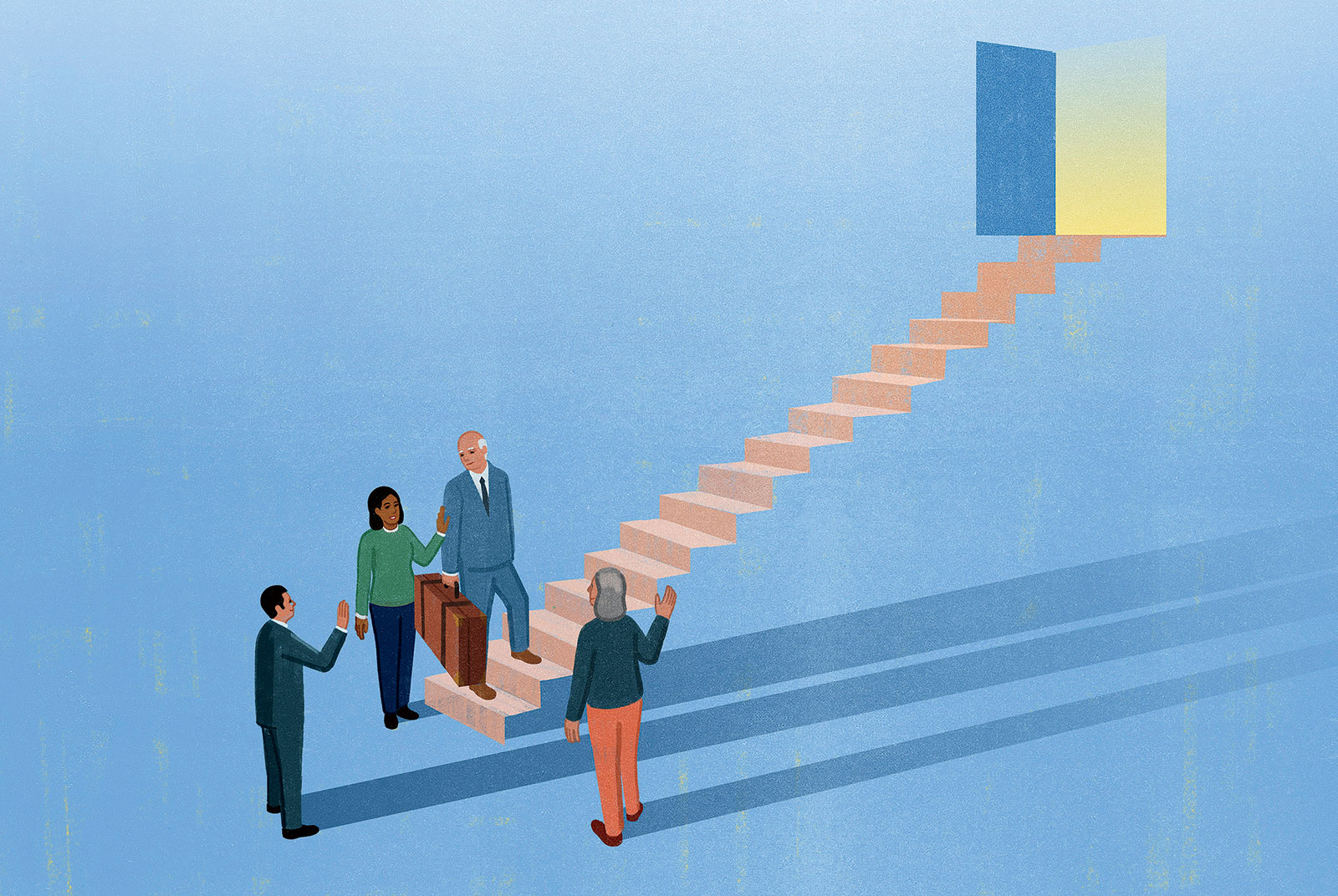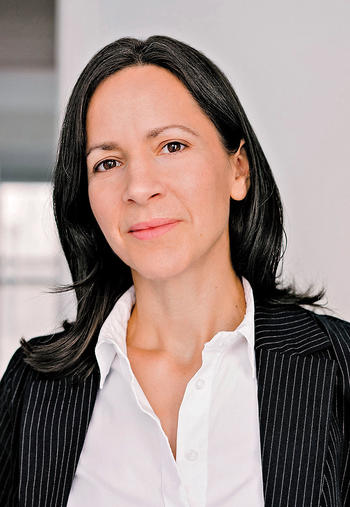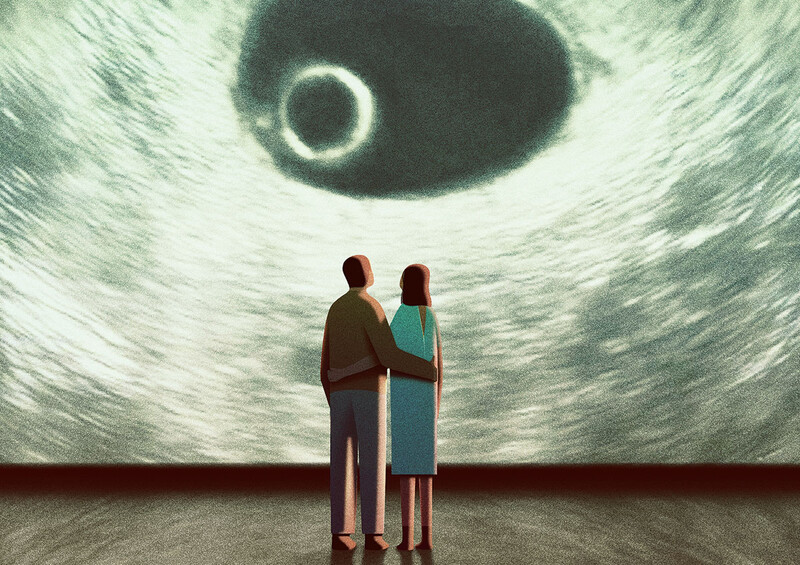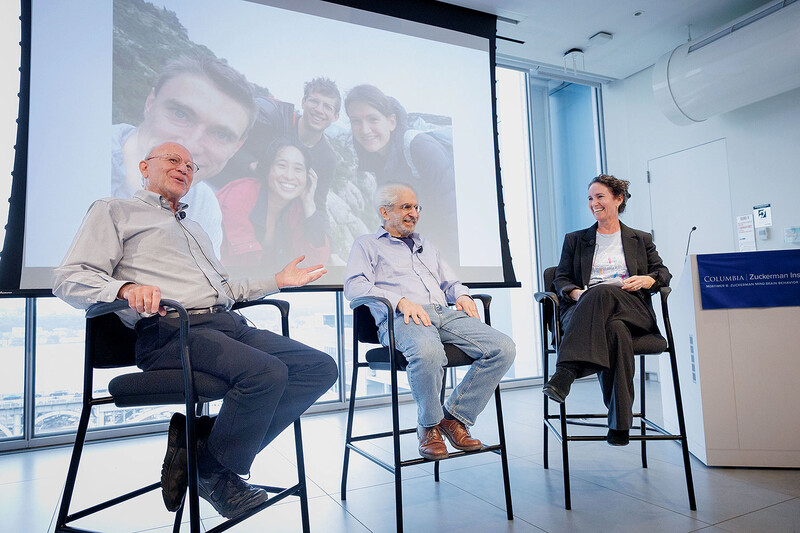
Lydia Dugdale is the director of the Center for Clinical Medical Ethics and the Dorothy L. and Daniel H. Silberberg Associate Professor of Medicine at Columbia’s Vagelos College of Physicians and Surgeons. Her book The Lost Art of Dying looks to the Middle Ages for wisdom on how to prepare for the end of life.
You’ve said that your passion is the ethical practice of medicine. How does that inform your daily work?
Ethics imbues everything I do. At the ethics center, I teach, write, fundraise, research, and consult on ethical issues in the hospital. I weigh in on very complex challenges in health care and research and help stakeholders — including doctors, patients, and families — make the best decisions. The discipline of ethics asks, “What is good or right in this particular situation?” When applied to medical practice, the stakes can be high — life or death. My colleagues and I seek to resolve quandaries in a manner that prioritizes the good of the patient.
Our ethics team might be called to the bedside when a patient refuses a lifesaving intervention, for example. The doctors want to know whether it’s OK to treat over the patient’s objection. Or we might be asked to consult when a patient wants to be discharged to a setting that is not optimal for healing. Or we might be called when families insist on aggressive therapies for actively dying patients. Usually the cases are not straightforward, emotions run high, and there is a lot of nuance. Some can be readily resolved by clarifying what’s legal. Others require a much lengthier investigative approach.
When I teach, I try to engage medical students on medicine’s moral questions and get them to think about its aims and philosophy. A friend of mine calls medical training a doctor factory: it’s soulless, and you grind through. My strategy is to offer avenues that go beyond the formal curriculum and incorporate philosophy, humanities, and art. I want students to take a more thoughtful and deliberate approach to medicine. I suppose you could say I’m an advocate of “slow medicine.”
What do you mean by “slow medicine”?
The physician and writer Victoria Sweet has a book on this. Just as slow food is healthier than fast food, slow medicine is healthier than fast medicine. Too often patients find themselves on medical conveyor belts that move swiftly and efficiently through treatments and procedures. If no one presses pause, the medical machine keeps moving and patients become passive recipients of procedures or medical techniques, including aggressive interventions at the end of life.
Your book The Lost Art of Dying centers on the question of how we might die better. What prompted you to write it?
I have taken care of so many patients who arrived at their life’s end completely unprepared. They haven’t considered the many decisions they might be asked to make about end-of-life medical interventions. They aren’t familiar with the benefits and harms of things like CPR or mechanical ventilation. They haven’t thought about what sort of memorial or funeral they’d like. They haven’t invested in the relationships that matter most to them. And they’ve not thought about the bigger questions of life and death. They’re suddenly asking, What do I believe? How do I make sense of my life? I talk in the book about the great writer Susan Sontag ’93HON, who thought deeply about so many things. Yet she never wanted to talk about death, even when she was actively dying. Her son was at her bedside, but he felt he could not even say goodbye, because that would require admitting to her that she was dying.
As doctors we can and should help people die better and die wisely. We have an incredible toolkit of resources to help ease suffering at the end of life. There is almost no pain we can’t treat, yet there are fewer opportunities to reflect on mortality and what it takes to die well. And even when patients ask us doctors to help them make sense of death, many doctors are unwilling to engage those questions.
The book takes inspiration from the ars moriendi, a form of writing that emerged in the 1400s to help people prepare for their own deaths.
Yes, ars moriendi is Latin for “art of dying.” The ars moriendi refers to a literary genre that asks us to think about the way we live and die. Its earliest iterations developed during the aftermath of the bubonic plague that decimated Western Europe in the mid-1300s.
Historians estimate that up to two-thirds of Europe’s population died during that plague, including priests and other spiritual authorities. With so much death, there weren’t enough religious leaders to attend to the dying and bury the dead. Although we aren’t sure who wrote the first version of these how-to-die-well handbooks, it was likely someone connected to the church. The books empowered the laity so they could prepare for death themselves without needing a priest.
After the printing press developed, illustrated versions of the ars moriendi began circulating to meet the needs of the illiterate and semiliterate. Over time, other religious and even non-religious groups picked up the idea and developed their own versions. These handbooks were in widespread use all over the West for more than five hundred years.
What was the main theme of the ars moriendi?
To die well, you have to live well. That means recognizing your finitude and wrestling with related questions of meaning and purpose within the context of a community.
The earliest iterations of the ars moriendi were particularly interested in five temptations commonly faced by the dying: lack of faith, despair, impatience, pride, and greed. The texts offered a consolation for each temptation: faith, hope, patience, humility, and generosity. It’s interesting to me that they did not suggest that people were tempted to fear death. My sense is that our modern reaction to death is probably best characterized as fear.
The ars moriendi was sometimes described in theatrical terms. Each death represents a drama. The dying person is the lead actor, and community members all play supporting roles. But at some point every supporting actor is going to become the lead — the dying person — so they spend their lives as understudies for that role. The practices of the ars moriendi were rehearsed over and over again.
In updating the ars moriendi for the twenty-first century, what advice did you find that we can still use today?
There’s a lot. For one thing, make sure you’re cultivating your relationships. People live and die much better if they are a part of a meaningful community. I had somebody say to me, “I’m a loner. I have a couple of good friends, but I don’t really have a community.” But a couple of friends is fine. It doesn’t have to be the medieval conception of community, with the whole village parading past the deathbed.
Someone once asked me, “I know whom I want to be with when I die, but I’m not ready to reconcile with them now. Why can’t I just wait a while?” My response was that we don’t know when we’re going to die. And if we choose to reconcile today, while we are healthy, those relationships are going to be so much richer when we’re at the end of life.
We must also acknowledge that we will eventually die. We can’t wait until the last minute to think through what our life means and what we believe happens when we die. In the ancient world, a victorious Roman general had a servant whose only job was to whisper in his ear, “Remember that you are but human!” And in medieval Europe, memento mori — such as locks of hair, skulls, or hourglasses — served as visual reminders that death is inevitable.
We need to live with the knowledge of our finitude constantly present — not in a macabre way, but in a way that helps us value our time and our relationships and that which is good in life.
The ars moriendi and the idea of lifelong preparation for death was still around during the Civil War and even into the twentieth century. What happened?
In World War I, there was a massive loss of life, and it was immediately followed by the 1918 flu pandemic, which also decimated the population. After the pandemic, death was the last thing people wanted to think about. Everybody had suffered loss. Traditional mourning rituals and deliberate attention to ars moriendi practices lost their appeal.
And then, in the US at least, we went into a period of enormous economic prosperity: the Roaring Twenties. The idea of living well as an end in itself took root. People did not want to concern themselves with dying well.
How did the changing role of hospitals affect our relationship with death?
In the late nineteenth century, we had about two hundred or so hospitals nationwide. That grew to more than six thousand by 1920, contributing to major advances in medicine and science. By the 1950s and ’60s, we were attempting artificial resuscitation and organ transplantation, and by the 1960s and ’70s, offering combination chemotherapy to stave off death. The hospital became the preferred site for taking care of the sick and dying. Hidden from view, death replaced sex as the ultimate unmentionable. The English anthropologist Geoffrey Gorer called this phenomenon “the pornography of death.”
We have to rethink dying in a hospital, which is chaotic and expensive and a place where both patients and doctors can be tempted into overtreatment. We have fantastic hospice facilities for those who want to focus on maximizing quality — not quantity — of life, but many people, particularly those outside urban centers, don’t have access to them. What’s more, most patients say they want to die at home. Home hospice is one option, but logistically it requires a lot of family support, so it’s not for everyone. There’s also an enormous toll on unpaid caregivers, who are often family members — usually women — who sacrifice their careers to care for the dying. This is good, noble work, but it comes at a high and un-reimbursable cost.
How do we get over the denial of death?
It takes time. We have to walk with those we love toward the fear and sadness. Walking toward fear of death — slowly, deliberately — does much to mitigate denial.
Has the pandemic changed anything?
I had hoped it would make people more aware of their need to engage with death, and I’ve seen an uptick in interest in the subject, but not as much as I had thought I would. And now with the good news of an effective vaccine, people may be tempted to think they don’t have to face their mortality. But mortality is still 100 percent. We need to begin the conversation and circle back to it again and again. I liken it to trying to talk to my adolescent daughter about the birds and the bees. The first time I tried to explain it, she was awkward and I was awkward. We put a little bit out there, circled back, had a second conversation, and it was a little better. By the third conversation, it was getting more natural.
Whose role is it to get these conversations started?
As a primary-care doctor, I’m required by Medicare to ask about end-of-life care decisions during the annual wellness visit. But all physicians who have long-term relationships with patients who are chronically and progressively ill should be having these conversations. And family members need to have these conversations with aging loved ones.
It’s easy to start the conversation by discussing advance directives. If your heart stops, would you want CPR? Would you want to be on a breathing machine? There are advance-directive forms online, and there’s a program called Five Wishes that literally scripts this conversation for you. And you move from there to: Have you thought about your apartment? Have you thought about your will? Have you thought about where you’d want to be buried, if you want to be buried? Do you want a funeral? If so, what music or readings matter to you and why?
How can people raise the odds that they die well?
Start now. How are you thinking about your finitude? How are you discussing this within the context of your family, your community? My goal is to get people to think and to engage, and if we do that — even if we don’t resolve all the questions — we’ll be much further along the path of being prepared for death. If we live deliberately, with gratitude and with attention to what matters most, our lives will be richer and our dying better.



